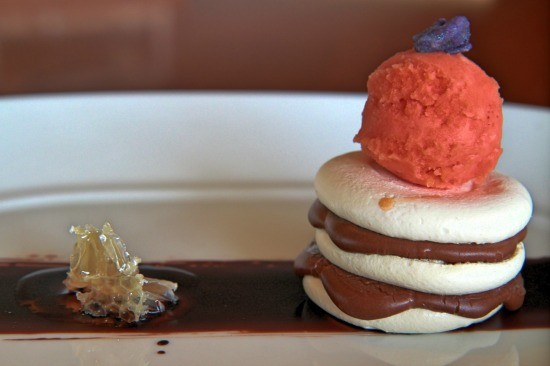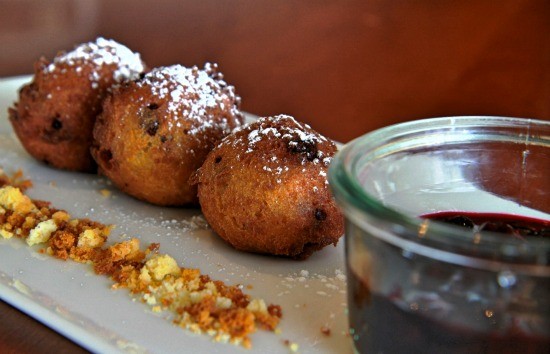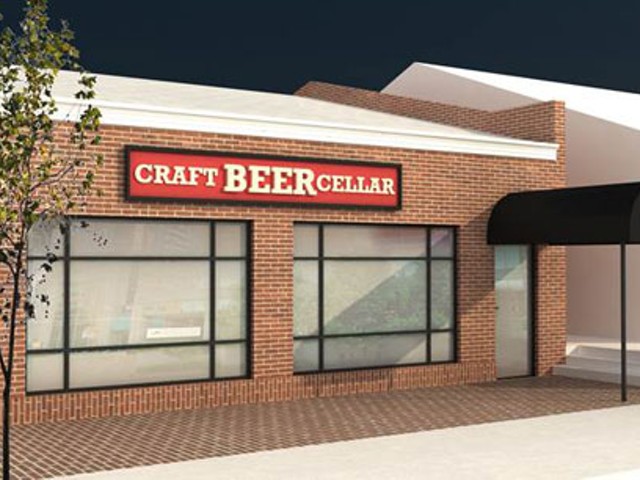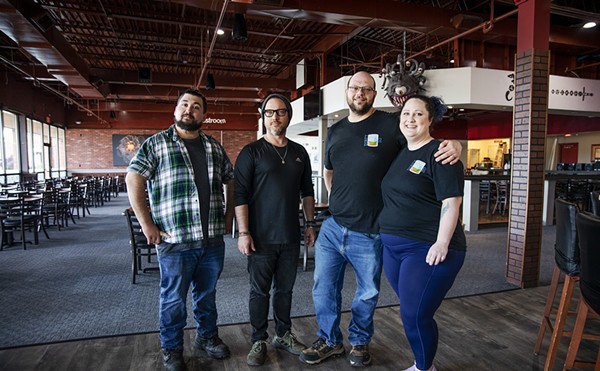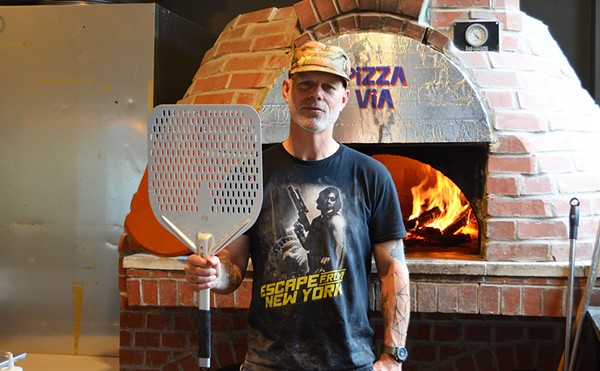In her semi-regular column Real Life of a Pastry Chef, pastry sous chef Mary Boehne of Cielo (999 North Second Street; 314-881-5800) at the Four Seasons Hotel dishes on secrets of the trade and about the industry as a whole. This week's topic: dessert conceptualization.
"Honey-lavender meringue layered with chocolate Tuaca mousse and blood-orange ginger sorbet garnished with fresh honeycomb and candied violets."
This is a dessert that is currently offered on my menu at Cielo. One of my guests once asked me, "How in the world do you come up with this?"
It made me stop and think: "How did this item come to be?" In an effort to clarify the process some pastry chefs go through, I thought I'd share how I conceptualize desserts and how home chefs can, too.
See also: The Real Life of a St. Louis Pastry Chef
Flavor combinations come with research and personal experience. Ingredients must balance and complement without overpowering one another. There are a couple of great books that help with pairing -- one that I love is Culinary Artistry by Andrew Dornenburg and Karen Page. It is a useful tool to develop ideas because it provides examples of specific food pairings to try.
My ideas generally start with the time of year. When fall hits, I'm thinking about butternut squash, cinnamon and pears. Right now, I'm already looking ahead to spring and summer: strawberries, lemon verbena and cherries.
While I develop flavor combinations, I am also already thinking of what it will look like on the plate. It needs to be somewhat practical for servers to carry, efficient for my team to assemble and replicate, as well as visually appealing to our guests. Sometimes, I will decide on a plate and design the dessert around it or vice versa. It can be frustrating to conceptualize an entire dessert design only to realize that I can't find the right dinnerware.
The honey-lavender meringue dessert took a few days and three different plate designs before I was happy. Originally, I was asked to come up with a fall pavlova, which is a baked meringue dessert. Traditionally, it is a thick meringue, filled after it's baked. I wanted to add height to the plate, so I baked it thin and layered the discs with the filling.
Honey lavender is typically more spring, but I love the combination any time of year. The mousse was originally chocolate amaretto, but I substituted it for people with nut allergies. Tuaca, an Italian vanilla-flavored liquor, was introduced to me by a friend who loved drinking it with hot chocolate. As Cielo is an Italian restaurant, I started researching different Italian citrus fruits to make a nice sorbet. Blood orange stood out to me, as its floral notes meld well with the lavender. I was introduced to candied violets earlier in my career, and it was one of those things that stuck with me. Finally, the fresh honeycomb -- which I first saw while working in Colorado -- seemed like a natural fit to bring out the honey in the meringue. So inspiration comes from all over the place.
Not all will be successful. If the dessert on my menu is ordered frequently, it may become a permanent resident on the menu; if it doesn't appeal to guests chances are it'll disappear. I had lemon ricotta fritters on our current menu that just didn't sell. They were beautiful, light and airy with a hint of dark chocolate and lemon, but no one ordered them. Needless to say, I had to bid adieu to one of my favorite treats. Luckily, St. Louisans' tastes have become much more adventurous over the past few years, so there's always something new to tempt them with. I found if I use common ingredients with an interesting twist or combination, like layering banana and cappuccino, people are more apt to try it.
Sometimes, dessert ideas are a lot like fashion trends. A popular one celebrates the "deconstructed" look. Plate presentations are looking more organic and less structured with an artistic and free-flowing feel. Sauces are being smeared with a spoon rather than applied in perfectly placed dots. Cakes are crumbled instead of cut into pieces, and garnishes are broken shards as opposed to cut into precise shapes. The other common trend lately is the rustic look. Mason jars, individual cast-iron skillets and housemade candy bars are on more menus than ever. Some of these examples I'd recommend include the Libertine's "Candy Bar," Sidney Street's "Snickers Bar," the Tavern's "Half-Baked Chocolate Chip Cookie Skillet," and Olio's "Key Lime Pie in a Jar." Enjoy!
Gut Check is always hungry for tips and feedback. Email us!
Follow @gutcheckstl

